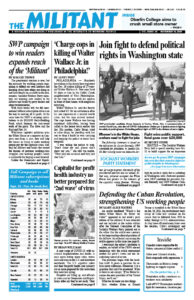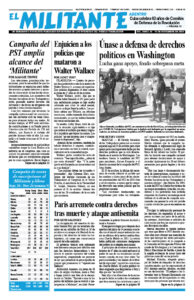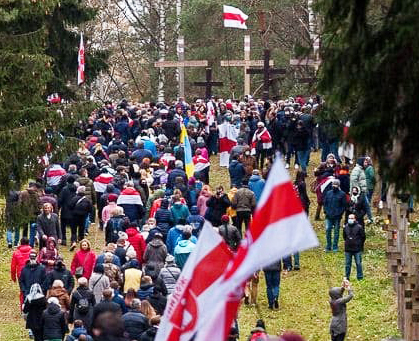Tens of thousands rallied in Minsk and across Belarus Nov. 1, in the face of government threats and police firing live “warning” shots in the air. Some 240 protesters were arrested. Millions have marched to demand the resignation of hated President Alexander Lukashenko, who declared himself the winner of flagrantly rigged elections Aug. 9.
Several thousand also marched to Kurapaty, above, on the outskirts of Minsk, where at least 30,000 people were executed from 1937 to 1941 under the dictatorial regime of Joseph Stalin when Belarus was part of the Soviet Union. Some historians say the toll was many times higher.
“The people’s memory lasts longer than a life of a dictatorship” and “Stop torturing your people” read some of the banners. Riot police tried to disperse the rally by throwing stun grenades into the crowd. As part of defending his increasingly authoritarian 26-year rule, Lukashenko has sought to rely on a strong alliance with Russian President Vladimir Putin, while at the same time seeking to bury the bloody history of the Stalinist counterrevolution, which overturned many of the gains of the 1917 Russian Revolution.
In response to a call for a nationwide strike beginning Oct. 26, the opposition managed to create “some hotbeds of strikes at factories,” Alexander Yaroshuk, a leader of the Congress of Democratic Unions, an association of independent labor unions, told The Associated Press Oct. 31. That was an achievement, he said, given that “KGB officers [Belarus political police] have flooded factory shops and raised pressure on strike organizing committees.” Independent union leaders have been arrested and some workers who backed the strike call were fired.
Lukashenko declared Oct. 30 his government “will not back down.” For the past 13 weeks, neither have the mass protests demanding he resign.


